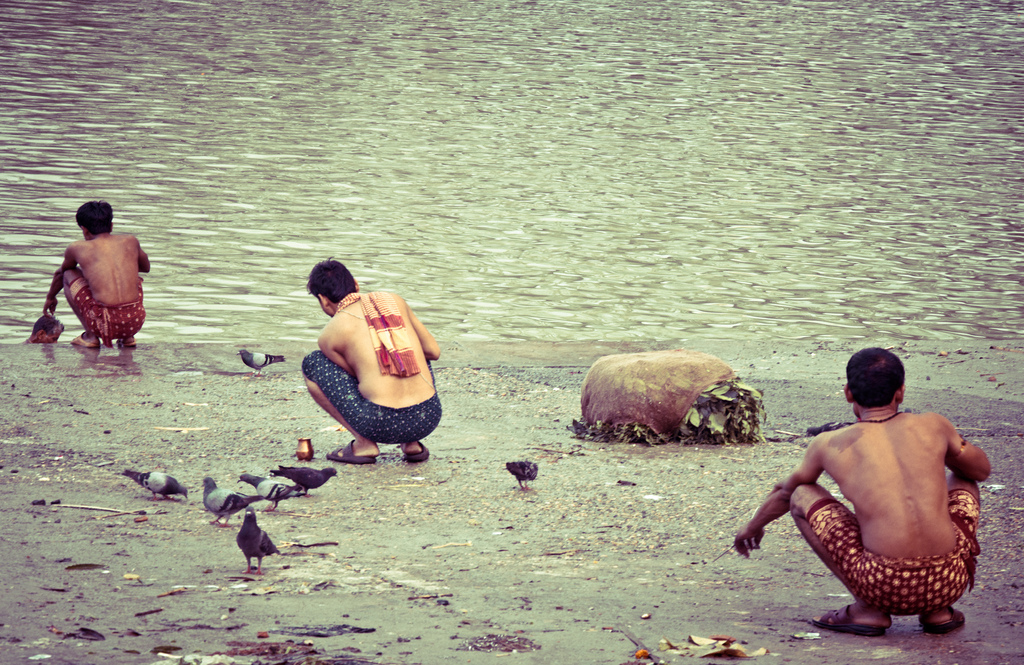Can you imagine if all the water bodies of our world get polluted? Or maybe, become extinct. Horrifying, isn’t it? While that might not turn true in near future, we are driving quite fast on the road to it. So, while it’s tome for the World Tourism Day, ixigo brings you some brutal truths from India, from Ganga.
High up, in the stretches of the western Himalayas, a roaring sound is often heard. Boulders, rocks, sheets of glaciers, and the densest of forests, nothing could stand in the way of the water body that’s behind this deafening roar. Yes, it’s Ganga or river Ganges, the lifeline of over 400 million people. So many generations has it nurtured, that it’s often referred to as ‘mother’. As the snow melts from the high peaks of Nanda Devi, Trishul, Kamet and more, Ganga is formed.
Icy blue at its point of origin in the Himalayas, the Ganga changes colour, from blue to dark blue to green to darker green to grey and darker grey, until you forget the fact that it’s Ganga. As the murkier shades touch it, humanity stands mute, silent to an ordeal brought by none other than them. And travel too pitches in, with all its force, to mar the beauty that Ganga once was.
The Journey – Major Points
Gangotri – Origin
Haridwar – Reaches Haridwar after covering 250 km from Gangotri.
Kanpur, Kannauj – After covering 800 km from Haridwar.
Allahabad to the east of India – Joined by rivers Tamsa, Ghagra and Kosi.
West Bengal to meet river Hooghly, crossing Kolkata.
Sweeps across to enter Bangladesh.
PROBLEM AREAS
The blow from tourism.
Haridwar, the first city where Ganga touches the plains after Himalayas, sees about 25,000 or more tourists everyday. While religion is the biggest draw at Haridwar, there are those who seek respite from the din of nearby metros. And Ganga, obviously, becomes the big bait for them all. Almost 5000 people gather at the banks in the evening to perform and witness the ganga arti, designed to pay respect to the river. But rather than respects, tonnes of flowers and other material are added to the waters of the river, sucking oxygen and life out of it.
Not many of the tourists know that the flowers that they float down the river get decomposed in the water only after drawing oxygen from it. This, in turn, harms water life to an extent that’s unimaginable. Add to it, the extra clutter of plastic bags, industrial waste, detergent foam and more, and you’ve a ready-made recipe for disaster.
Old city dwellers recount the days when they used to sit by the banks to watch schools of fish loitering in the water at Har ki Paudi, the main bathing ghat. The upper reaches of the river were also home to bottle nose dolphins back then! But now, it’s only the little, untamed streams, away from the town that breed fish.
Moving ahead, let’s explore the Ganga waters at the other corner, at Varanasi. A city that lives by the side of the river with more than half of the population’s livelihood depending on the city. More than livelihood, the city dumps some 200 million litres of untreated sewage to the waters. Adding to the woes is the steady influx of tourists, the ones that do not see behind the shimmering waters of the river.
The animal life that Ganga supports.
Though much of the animal life that the Ganga supported has become extinct because of the increasingly polluted water, there’s still a whole line of fauna that depends on its waters. Apart from the wildlife that ventures freely in the wild, Ganga supports wildlife at three major national parks – Rajaji National Park, Jim Corbett National Park and Dudhwa National Park. Elephants. tigers, sloth bears, deer, rhinoceros, crocodiles, jackals, foxes, Asiatic lions and of course a variety of fish are just some of the big names fed by the Ganga.
HOW YOU, AS A TRAVELLER, CAN PITCH IN.
Do not litter around riverbanks, for it’ll end up in the waters in all probability.
Do not, in any case, throw plastic bags, bottles in the water, for it might not dissolve even after centuries.
Do not throw flowers or any other material that you think decomposes in the waters, for it takes away vital oxygen content from water.
While you go to a National Park or any wildlife sanctuary that’s around Ganga or any other river, enquire about the waste disposal system of the resorts/hotels. Please report to the concerned authorities or NGOs if untreated waste is dumped in the rivers.
Some resorts and tour organisers offer river cruising and fishing tours. Before you hop on to one, make sure that the organisers have the permission to do so.
Never ever use any chemicals, including soaps and detergents, in river water. The harm is much more than just the foam that you see on the water surface.
Do report to the civic agencies and NGOs if you know of any origin of industrial waste being dumped into the river.
About the author
Shikha Gautam loves to travel, read, plays flute and guitar among other things. Not necessarily in that order! You can contact her on twitter @ShikhaGautam














